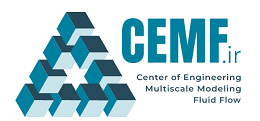Excess, unrecoverable hydrocarbons are collected and burnt (in a flare) before releasing to atmosphere to reduce their environmental impact. Millions tones of hydrocarbons are burnt each year all around the world. A survey shows that, in 2017, around 270 million tones of CO2 is emitted by flaring.
In many industrial plants (oil and gas, chemical and petrochemicals), the combustion of hydrocarbons is not complete and methane and VOCs may be the products of flaring. These compounds have much more diverse effects on the environment than CO2. So, designing and adjusting the operating condition of a flare to achieve complete combustion and reducing emission of VOCs is vital, though decreasing the volume of flaring should be priority.
CFD simulations combined by proper combustion models can give us a clear view of the hydrocarbon combustion in a flare and help us to re-design and adjust the operating condition for a better performance of the flare. Here, you see an animation of methane combustion in air. The animation is obtained by post-processing of an LES simulation of the methane combustion. Simulations were performed by OpenFOAM and visualization by Paraview.

Hi h.norouzi, do you have tutorial for this case? From the video, it looks like you also modeled the soot? How do you do that in the case setting and post-processing?
Use standard solvers (fireFoam, rhoReactingFoam and etc.), you will be able to simulation combustion in OpenFOAM. You will have everything u need for combustion modeling.
I think I was fooled by your video before. The translucent “smoke” is actually CO2, right?
Yes, look at the legend for CO2 concentration. I had no intent to fool anybody. I just tried to visualize CO2 as the smoke of the flame, though it is not actually visible in the real world. 🙂